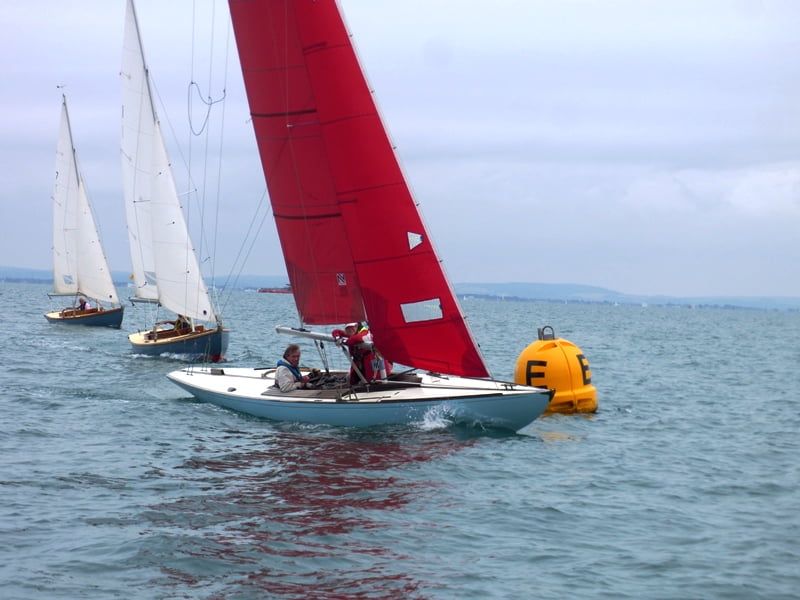Over the years, Hydrosphere has been involved in the supply of various high-quality aids to navigation for use across a wide range of applications. Recently, we supplied a series of state-of-the-art racing marker buoys to the premier sailing clubs of Bembridge and Seaview, both of which are based on the Isle of Wight.
Bembridge Sailing Club and Sea View Yacht Club are similarly very active organisations, promoting and running their respective club’s yacht and keelboat racing activities with aplomb. Both clubs also host numerous open events for visiting class yacht fleets, such as the J-70s and SB20s.
With over 1,500 members, Bembridge Sailing Club continues to support active youth training and over 115 club and regatta race days, as well it’s vibrant social programme. Racing at Bembridge includes a dinghy fleet and three main keelboat classes: Redwings, Bembridge One Designs and Illusions.
Sea View Yacht Club is somewhat unique, in that it owns and maintains its fleet of keelboats known as the ‘Sea View Mermaids’. The fleet is available to charter, and throughout the summer the boats are sailed as often as three times a day, every day. The yacht club is also the home to a fleet of clinker-built dinghies called the ‘Seaview One Designs’, which were founded in 1931. The fleet is now just under 200 in numbers, making it the largest one-design fleet on the South Coast.
Time for an alternative
With so much sailing and yacht racing activity going on at these clubs throughout the summer months, both organisations need to have a large number of racing marks deployed in the surrounding waters.
These racing marks must be clearly visible even in choppy conditions and must be equally visible to avoid becoming potential navigational ‘obstacles’ for the many cruising yachtsmen who are also sailing and cruising in the Solent.
In recent years, there has been increased emphasis, particularly from Queen’s Harbour Master Portsmouth and the Solent Cruising and Racing Association, to ensure racing yachts do not ordinarily use navigational marks as turning marks. Navigational marks are not deployed for this use — respecting that fact helps avoid damage to these vital aids, while also keeping racing yachts away from busy shipping channels.
Both the clubs had previously been using their own racing buoys, which dated right back to the Second World War and were originally manufactured as floats for use as ‘mine net buoys’.
These metal buoys were large and spherical in shape, and had an interesting claim to fame: they were taken on by the clubs after starring in the 1975 British rock musical fantasy drama film ‘Tommy’. Much of that film was shot in locations around Portsmouth, including a scene near the end which featured giant ‘pinballs’: the obsolete mine net buoys, which had been found in a British Navy yard, sprayed silver and filmed in situ.
Each year, the buoys would have to be pulled out of the water by the club’s contractors and scrubbed off, before being scraped back ready for a fresh layer of yellow paint to be applied ahead of the new yacht racing season. This process was quite tedious and time-consuming — not to mention costly.
By the 2000s, these buoys had occasionally started disappearing below the waves! After so many years afloat in corrosive seawater, areas of their entirely metal bodies began rusting through, allowing them to fill up with water. After the buoys had been recovered, patched and then re-deployed on a few occasions, the time had come to look for an alternative…
Hydrosphere’s involvement
Both clubs approached Hydrosphere for advice on and assistance with a suitable solution. We recommended what has rapidly become the preferred ‘buoy of choice’ for racing yacht clubs in and around Europe: the Mobilis T-1200, which can already be seen in the Solent region.
Mooring is from either the side or from the bottom of the small to medium-sized tail tube buoy which can be lifted from the eye on the top, allowing it to be quickly and easily deployed.
Thanks to its robust 1.2m diameter shaped hull and galvanised steel tail tube combined with adjustable ballast weights, the buoy provides a stable platform for a small, self-contained solar-powered light. Daymark floats then offer a generous amount of buoyancy and a large visible surface area — ideal for use as a racing marker in various conditions.
As with other buoys in the Mobilis range, the floats are rotationally moulded with medium density polyethylene (MDPE), which is UV stabilised to retain its colour within IALA guidelines for over 15 years. Crucially, the floats being MDPE bodied means that if they do inadvertently come into contact with a craft’s hull, they are far more forgiving and much less likely to cause damage or harm to the yacht — useful if a racing competitor has accidentally misjudged a tide’s strength!
The final part of the project involved applying adhesive vinyl lettering to the buoys to distinguish them, as both yacht clubs need to differentiate their marks and require them to be ‘named’.
To find out more, please contact sales@hydrosphere.co.uk or call +44 (0)1420 520374.








